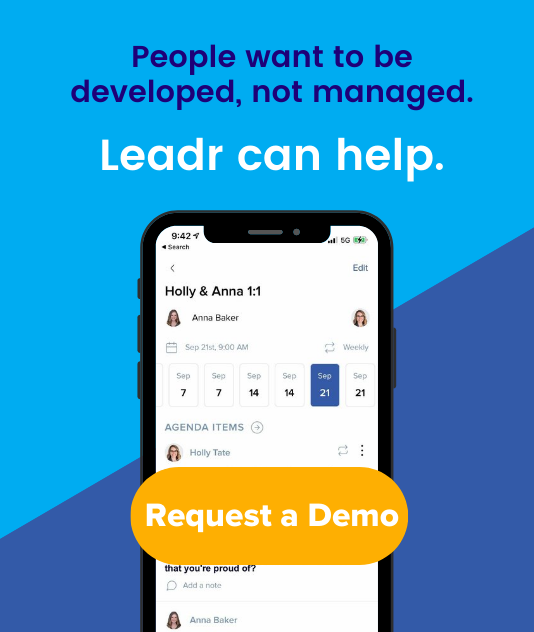A Recipe for Effective Goal Setting
While most organizations practice goals, the structure of these goals and their effectiveness varies greatly. The allure of goals makes sense. What other tool has the potential to create alignment, in an organization, on the most important tasks to be completed?
So, how should goals be done? What are the pitfalls to avoid? How can organizations use goals to obtain, as John Doerr describes it, the four primary superpowers: focus, alignment, tracking and stretching? We’ll answer those questions in this recipe for effective goal setting.
First off, let’s answer the what’s and the why’s and then we’ll tackle the how in a minute.
What purpose do goals serve and why take the time to invest in them?
- Effective goals provide Alignment within teams and across the entire organization
- Effective goals provide Clarity for each employee and team to know exactly what they’re working on
- Effective goals provide the Ability to Say No and stay focused on the most important work
- Effective goals provide the Ability to Demonstrate Success, or in other words, we did what we said we were going to do.
What are some of the keys to effective goal setting?
- Effective goals are collaborative in the setting, keeping, revising and reporting. Ideally, this collaboration is cross-discipline.
- Effective goals are set using a mix of both top-down and self-imposed objectives
- Effective goals and your progress towards those goals are transparent across your peers, other teams and the organization
- Effective goals are adjusted, if needed, and regularly revisited to make sure they are the most relevant top priorities at all times
The Proof
Data and research to back up the principle
- Only 7% of employees fully understand their company's business strategies and what's expected of them in order to help achieve the common goals. (– Robert S. Kaplan and David P. Norton, "The Strategy-Focused Organization," Harvard Business School Press, 2001)
- A 2-year Deloitte study found that employee engagement is strongly influenced first by ‘simple, clear goals,’ specifically, ‘clearly defined goals that are written down and shared freely.’
The Practice
Step by step instructions to follow as you try this recipe out for yourself
Step One - Set your ‘man on the moon’
Regardless of the specific goal format you’ll be using, make sure you take time to define the big vision you are working towards. This may be as lofty as a 15-year goal or it may be something nearer term, like 3-5 years. Ideally, the ‘man on the moon’ is memorable, missional, and attainable.
Step Two - Choose the format you’ll be using
There’s no right answer here. You could even blend a couple of practices together to find something that works for your organization. Not sure where to start? Try these three commonly used formats: OKR, OGSM, and SMART. Hint: It may be helpful to find other managers and executives who have tried some of these formats to ask for their opinion and learn from their experience.
Step Three - Set the example
Leaders go first. Whether you are leading at a team level or as an executive, make sure you set the example. If possible, roll the new goals format out in phases, with you leading by example for the first quarter, and then pushing it out to the rest of the team/organization the following cycle. Don’t rush through the defining of your goals, but take time to make sure they are deliberate, well thought out and representative of the most important priorities of the business.
Step Four - Make and keep them transparent
Whichever way you choose to roll them out, it’s crucial to make and keep the goals transparent. First, make them transparent as you set them, allowing others to collaborate, ask questions and push back if there are cross-dependencies. Second, keep them transparent throughout the quarter. This can look like taping them on your wall, reporting on them every week in a team meeting, or by using a goal tracking software.
Step Five - Revisit them often, as least every 90 days
The worst goals are the irrelevant ones. It’s not a failure to adjust a goal partway through a review cycle if conditions have changed and setting a revisit date is a force function to make sure you and your team are always working on the most relevant and important priorities. The easiest way to do this is to operate on a quarterly review cycle, but you may set more frequent reviews as well.
Step Six - Reflect and share learnings
Nothing improves future goal setting like taking the time for self-reflection and honest assessment at the end of a goal cycle. Go beyond yes and no answers and instead pick two reflection questions for everyone to answer and share candidly with the team. John Doerr recommends these two, “What did I learn that I didn’t foresee at the beginning of the quarter?” and, “How will I apply this lesson in the future?” Remember, leaders go first.
Step Seven - Expand the roll-out
If you took the phased roll-out approach, now is the time to expand your new goals initiative. Take your learnings, make any necessary tweaks to the format and process, and then work with the rest of your team to set their own goals. If you used a goal setting software, there may be some training required. If you didn’t phase the roll-out, your step seven will be to rinse and repeat. Effective goal setting is a muscle and it won’t be a perfect process the first, second and even tenth time. Keep at it, make adjustments, and share learnings as you go.
What goals are you working toward? Is there anything keeping from achieving them? We’re curious to know, so don’t forget to share!
Share this
You May Also Like
These Related Stories

Details or The Big Picture: Which One Should You Give Priority?

Goal-Setting 101: 3 Tips For Setting and Not Forgetting Your Goals




No Comments Yet
Let us know what you think